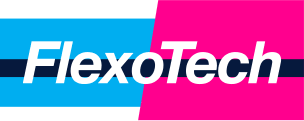Connecting in the cloud
Workflow software is expanding from the prepress environment and increasingly being made capable of linking to other parts of the print operation, with cloud connectivity playing a key role.
The traditional view of workflow in the print sector – that it was all about automating prepress and production tasks to avoid repetition – is evolving. To remain relevant, it cannot stay on such an island. It must become part of a greater whole, and its developers know this.
‘We often get that comment: ‘have you not already fixed that problem of automating prepress?’, and it’s largely true,’ says Jan De Roeck, director of marketing, industry relations and strategy at Esko. ‘We have had automation tools in prepress for many, many years. You can’t limit your scope to the prepress department though. The problem with automation and workflow is that, in reality, many other departments are involved, and it can be extended all the way to the packaging buyer. That’s a very important development going forward.’
What is needed – and indeed what is happening in the market – is for workflow and its prepress automation tools to become more closely integrated with wider business platforms, specifically MIS systems, to help bring end-to-end efficiency throughout the print operation.
‘If you keep the prepress workflow on its island, and you don’t integrate with the business side, you miss a lot of opportunities to stop errors from happening,’ Mr De Roeck adds.
HYBRID Software sees this pattern developing also. Tom Elton, who is product manager for its CLOUDFLOW product, articulates its role as the ‘middleman’, saying, ‘We pass information around, and do the logic to make decisions based on certain scenarios.’ But it is also more than that. ‘For us, in an abstract sense, it’s about automation and information,’ Mr Elton continues. ‘It is very common now to integrate with information systems like MIS and ERP. We have out of the box configurations with LabelTraxx, for example. We plug into these systems, pass information around and automate tasks. It’s connectivity, it’s reacting.’
Cloud connections
Alongside integration, the other big technological trend for workflow is cloud deployment, or software-as-a-service. There are many implications that arise from this, both in a business sense, and in the connectivity and functionality that workflow can deliver within a business and externally.
The business case is certainly more attractive to small and medium sized printers, who are less able to afford large IT investments themselves; in cloud deployments, they can outsource infrastructure, skills and security costs to companies such as Esko and HYBRID. The security aspect has its own dimensions of course. Companies are entitled to be concerned about data security, because cybercrime is a very real threat.
‘The kneejerk reaction is to worry about this when adopting a cloud system. Companies can either invest heavily in IT skills and people to manage this internally, or they can bring in people that do this for a living and have a competence in it, and that’s what we claim to be,’ said Mr De Roeck.
From the connectivity and functionality perspective, great new opportunities can be opened through implementing a cloud-based workflow. A key application that demonstrates this comes in the nexus between customer service employees at the printing company and the customer at an external site.
Esko’s Jan De Roeck says, ‘It’s not acceptable today that everyone in the value chain must install an application on their desktop. With cloud-native technology, the browser becomes the operating system. If you are a packaging buyer and receive a file to review and approve, the only thing you need to do is click on a hyperlink and it will open in a dedicated viewer for packaging. What’s very important there is that the person at the brand will use exactly the same technology as the prepress operator editing the file.’
Integrating cloud-native applications can link the workflow with other parts of the operation. Esko gives the example of its Cape Pack pallet optimisation app, which makes operational and logistical data available to all users so that the optimum pallet calculations can be made. HYBRID Software’s CLOUDFLOW is highly modular, and a cloud implementation makes activating and deactivating different modules a simple process. One of the HYBRID modules is Datalink, based on universal interface technologies such as XML, JDF, REST and SQL, and capable of data exchange with MIS, ERP, CRM and web to print systems.

‘We plug into these systems, pass information around and automate tasks. It’s connectivity, it’s reacting.’ Tom Elton, CLOUDFLOW Product Manager, HYBRID Software
Enabling apps
Another company very much interested in this kind of integration is eProductivity Software (ePS), which isn’t a workflow software developer per se, but has a suite of ‘enabling apps’ that can help extend the reach of workflow and MIS within a print business. Examples of this are the shop floor data app AutoCount and PrintFlow scheduling, while ePS’s Automator tool can sit between and across different systems and applications and wait for specific ‘events’ to happen that it uses to trigger further actions. It is highly configurable.
Kevin Blakey, product director for packaging at ePS, comments, ‘The tools that Esko and HYBRID have are great, and people do amazing things with them. When we add our enabling apps to the mix, we see some interesting use cases.’
A further customer service example helps to illustrate this. A customer service representative (CSR) at an ePS client had developed a habit of watching the picking list on the warehouse system and ringing the customer when this system reported that its job was being picked. The company had the idea of capturing this excellence and making it standard for all customers by putting it into a template in the workflow that would prompt such an action from every CSR.
‘What we are really saying here is that we can take some of those tools and techniques that are quite prolific from a production workflow point of view,’ said Mr Blakey, ‘and we can add in some end user configurability, allowing them to start automating admin and customer service processes. People can start replicating the things that they do well in their business using this technology.’
Speed to market
There remains plenty of scope for improving workflow technologies, both in a feature sense, and in how they can be made to integrate on a business-wide level. One area that will certainly develop is the use of Artificial Intelligence, but according to Tom Elton of HYBRID, this is still in its early stages. ‘We have some customers using our workflow to link with generative AI systems, but it is more explorative at the moment,’ he said.
In closing, it is worth drawing back even further from the conceptual development of workflow software to remember what the point of all this activity really is. Jan De Roeck of Esko helpfully reminds us, saying, ‘The other perspective, which is probably more important, is what is the overall challenge in the industry, what are those buying packaging needing? If we listen to what the key business challenges are now, the main one is speed to market. How fast can a brand react to a change in consumer demand?
‘So, the real question is not about features but about shortening the time from approved order to finished product on the shop shelf. That’s why things like our cloud-based Share & Approve service, which helps integration between the brand and the printer’s CSR, is so important. There are so many hooks into this opportunity to accelerate the go-to-market process for the packaging industry and that’s where we have a lot of headroom for improvement.’

